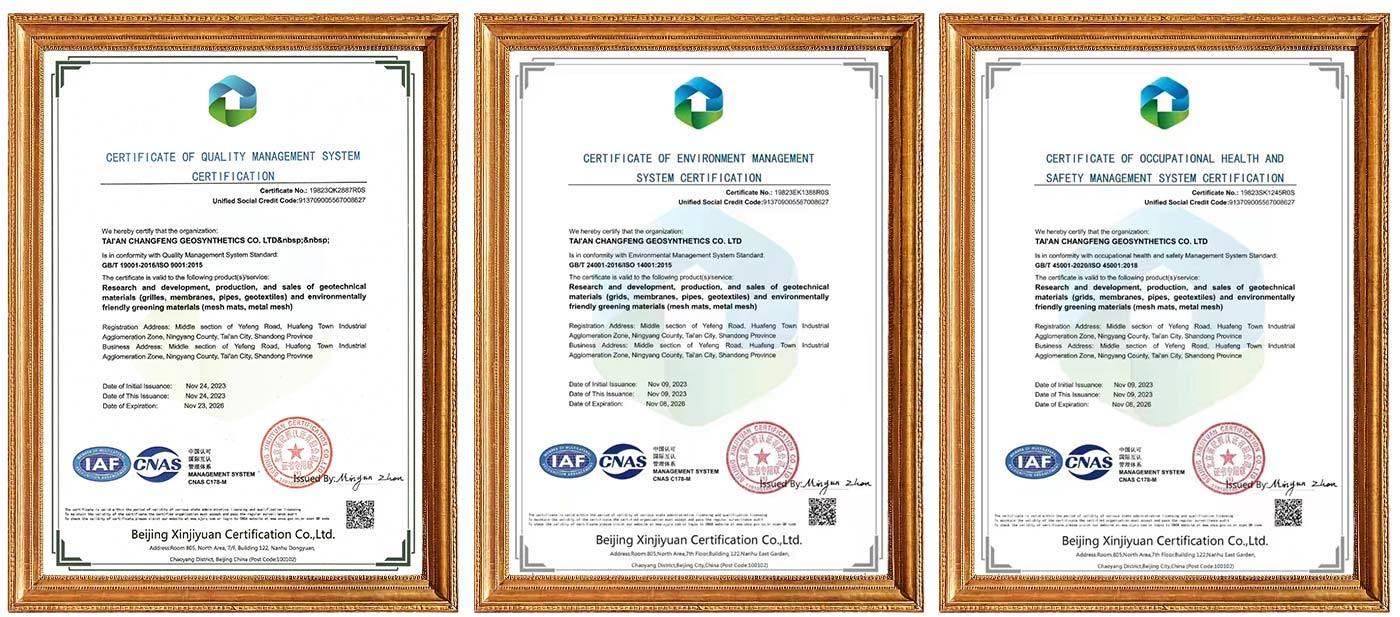
Tunnel engineering Geocomposite
Subclassification:
Geocomposite
Key words:
Geocomposite
Email:
WhatsApp:
Product Details

Composite geosynthetics are composite substances composed of soil and different auxiliary materials. It is commonly composed of soil and bolstered or increased substances (such as fibers, bentonite, clay minerals, chemical additives, etc.), and is made thru mixing, compaction, solidification and different processes.


Composite geotechnical substances have more than one features and advantages. Firstly, it has excellent tensile and compressive strength, which can decorate the mechanical homes of soil, enhance its bearing capacity, seismic and liquefaction resistance. Secondly, composite geotechnical substances can enhance the engineering residences of soil, such as bettering its impermeability, anti slip and stability, lowering soil contract and lateral deformation. In addition, composite geotechnical substances have properly sturdiness and corrosion resistance, and can cope with special environmental stipulations and engineering requirements.
The software fields of composite geotechnical substances are very extensive. In fundamental engineering, it can be used for soil reinforcement, basis treatment, slope safety and different engineering projects. In transportation engineering, it can be used in floor engineering such as roads, railways, and airport runways. In hydraulic engineering, it can be used in tasks such as embankments, dams, and revetments. In environmental engineering, it can be used in initiatives such as landfills and waste disposal sites. In addition, composite geotechnical substances can additionally be utilized in a couple of fields such as mining engineering, tunnel engineering, and marine engineering.
In summary, composite geotechnical materials are an essential civil engineering cloth with a couple of features and utility advantages, which are of remarkable importance for enhancing the engineering overall performance of soil and improving the balance of engineering structures.

| Property | unit | BC50/D200 | BC63/D200 | BC70/D200 | BC80/D200 | Test Standard | |
| Geocomposite specification | |||||||
| Hydraulic conductivity(MD) |
M²/s | 2.8×10-3 | 3.2×10-3 | 4.0×10² | 5×10-3 | ASTM D4716 | |
| Puncture | KN/m | 0.17 | 0.17 | 0.17 | 0.17 | ASTM D7005 | |
| Resistance | |||||||
| Core Material Geonet Specification | |||||||
| Thickness | mm | 6.3 | 7.0 | 8.0 | 9.0 | ASTM D5199 | |
| Density | g/cm³ | 0.94 | 0.94 | 0.94 | 0.94 | ASTM D1505 | |
| Carbon Black Content | % | 2 | 2 | 2 | 2 | ASTM D1603 | |
| Tensile strength (MD) | KN/m | 8.0 | 10.0 | 12.0 | 14.0 | ASTM D7179 | |
| Geotextile Specification | |||||||
| Unit weight | g/m2 | 200 | 200 | 200 | 200 | 200 | |
| Geotextile type | Continuous filament non-woven geotextile | ||||||
Honor

MESSAGE



